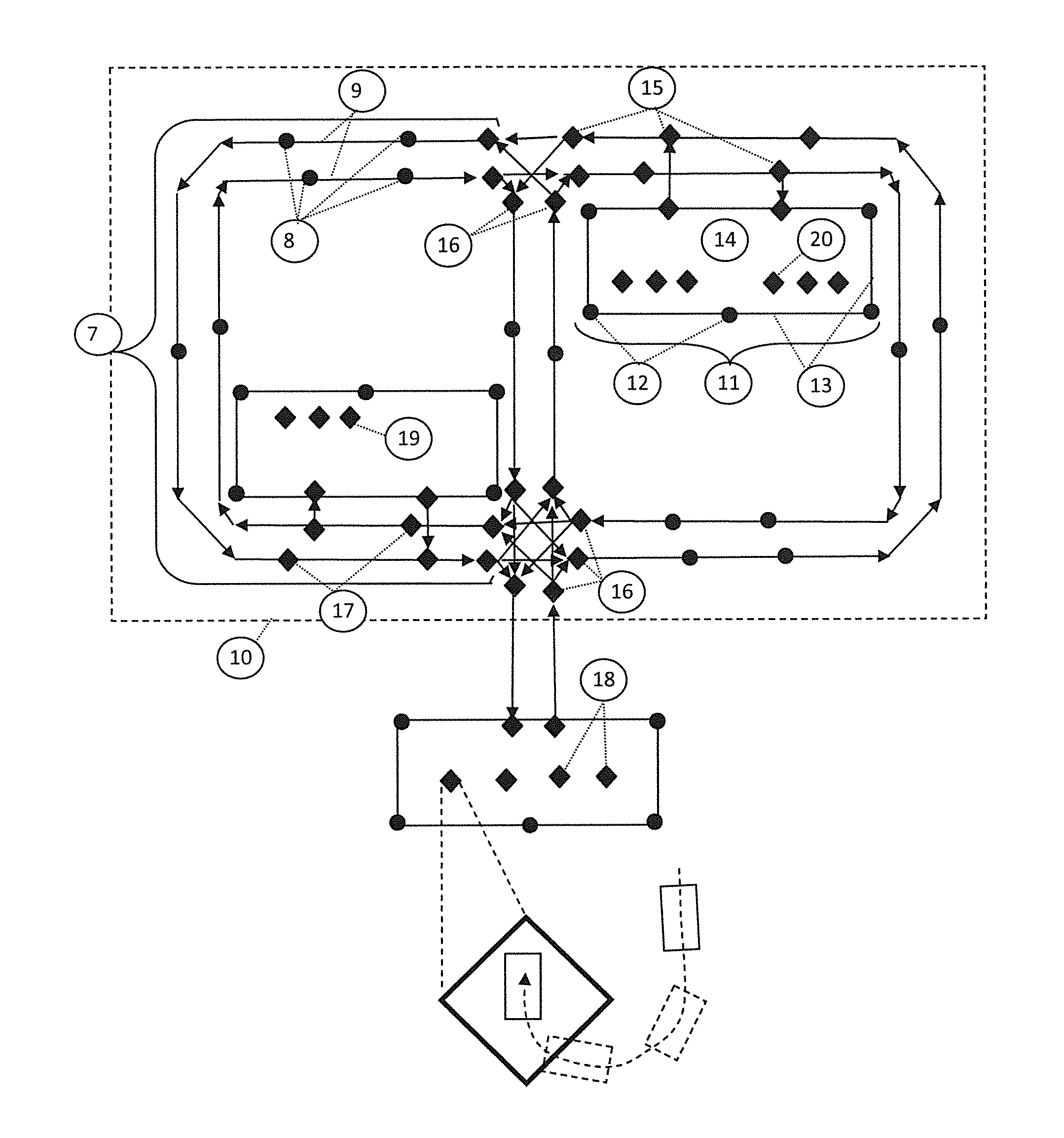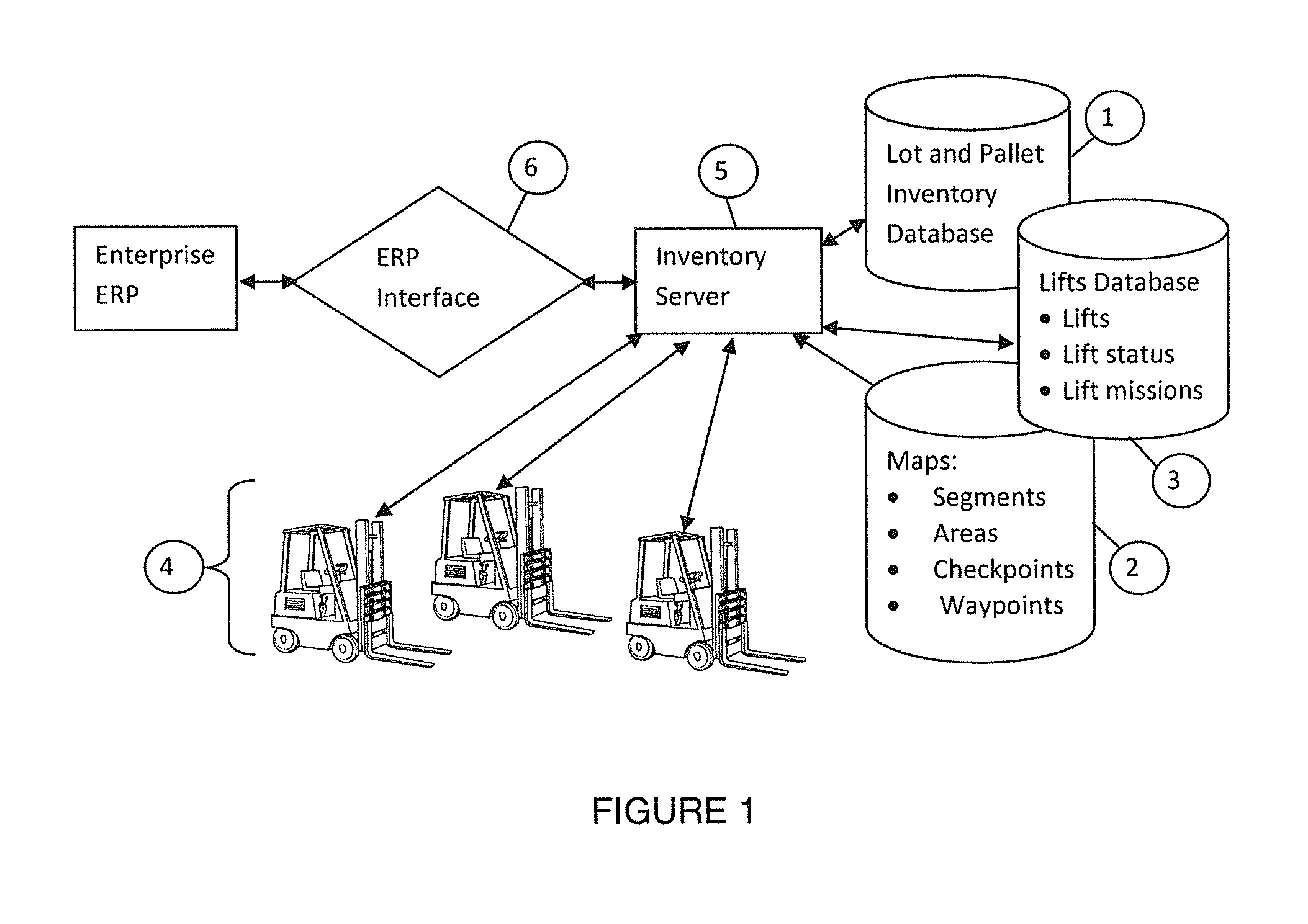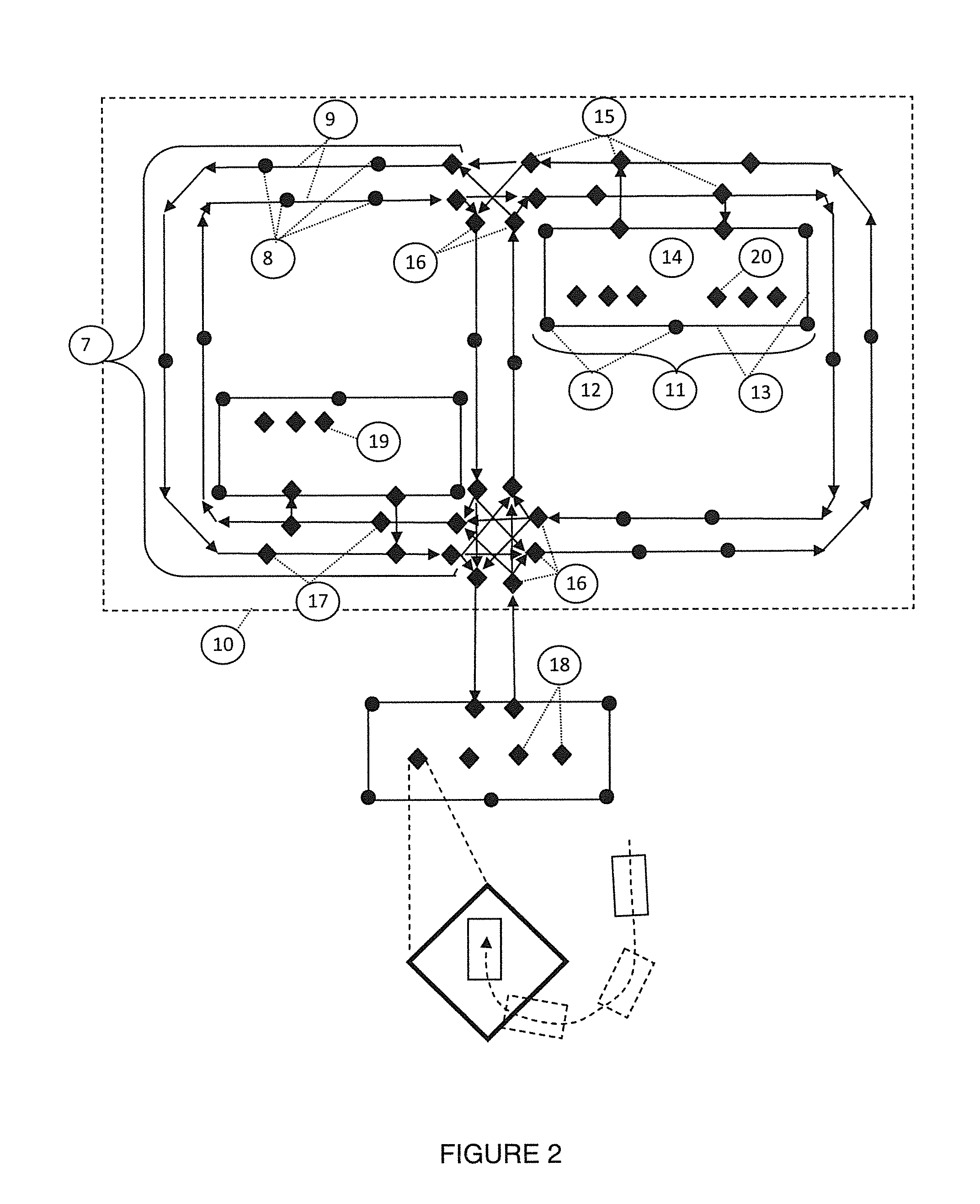Automated warehousing using robotic forklifts
a robotic forklift and automatic technology, applied in the field of material handling systems, can solve the problems of requiring rework of the entire storage/retrieval space, high cost of automation just described, and delay in responding to the process, so as to reduce the initial capital and operating costs and manage the capital investment rate.
- Summary
- Abstract
- Description
- Claims
- Application Information
AI Technical Summary
Benefits of technology
Problems solved by technology
Method used
Image
Examples
Embodiment Construction
[0028]This invention resides in an automated material handling, transporting and inventory management system that removes the requirement to operate fully manually using conventional vertical storage and retrieval (S&R) machines (i.e. forklifts) or fully automatically (S&R gantry type system or managed floor space systems with inventory holders and mobile drive units). The approach assumes concurrent use of conventional lifts and similar transport platforms, some equipped with automation to operate safely along with manually drive lifts into and out of the warehouse.
[0029]The invention is based on automated inventory control requests similar to those that drive gantry S&R systems, the Kiva Systems inventory holder, and mobile unit S&R systems. But higher efficiency and responsiveness is achieved by combining conventional lifts and pallet shelving units, emerging automated drive technology applied to at least some of these lifts, and an automated S&R database and controller system.
[0...
PUM
 Login to View More
Login to View More Abstract
Description
Claims
Application Information
 Login to View More
Login to View More - R&D
- Intellectual Property
- Life Sciences
- Materials
- Tech Scout
- Unparalleled Data Quality
- Higher Quality Content
- 60% Fewer Hallucinations
Browse by: Latest US Patents, China's latest patents, Technical Efficacy Thesaurus, Application Domain, Technology Topic, Popular Technical Reports.
© 2025 PatSnap. All rights reserved.Legal|Privacy policy|Modern Slavery Act Transparency Statement|Sitemap|About US| Contact US: help@patsnap.com



